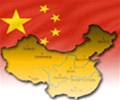
China’s economic growth will likely slow to 4.5% in 2025 and further decline to 4.2% in 2026, according to a Reuters poll, with policymakers ready to launch new stimulus measures to ease the impact of rising US tariffs which will come.
Gross domestic product (GDP) is likely to grow by 4.9% in 2024 – largely meeting the government’s annual growth target of around 5%, helped by stimulus measures and strong exports, according to the median estimate of 64 economists polled by Reuters .
But the world’s second-largest economy faces rising trade tensions with the United States as President-elect Donald Trump, who has proposed sweeping tariffs on Chinese goods, returns to the White House next week.
“Potential US tariff increases are the biggest drag on China’s growth this year, and could impact exports, corporate capital spending and household consumption,” analysts at UBS said in a note.
“We (also) expect property activity to continue to decline in 2025, although the headwinds to growth are smaller.”
Growth likely accelerated to 5.0% in the fourth quarter from a year earlier, up from a third-quarter pace of 4.6% as a series of support measures took hold, the poll showed.
On a quarterly basis, the economy is expected to grow 1.6% in the fourth quarter, compared with 0.9% in July-September, according to the poll.
The government will release fourth-quarter and full-year GDP data, along with December activity data, on Friday. (0200 GMT).
China’s economy has struggled to gain traction since its post-pandemic recovery quickly stalled, with a prolonged property crisis, weak demand and high levels of local government debt weighing heavily on activity, worsening business and consumer confidence.
Policymakers have rolled out a series of stimulus measures since September, including cuts in interest rates and bank reserve requirement ratios (RRR) and a 10 trillion yuan ($1.36 trillion) regional debt package. They also expanded trade-in schemes for consumer goods such as household appliances and cars, helping revive retail sales.
Analysts expect more stimulus to be rolled out this year, but say the scope and size of China’s move may depend on how quickly and aggressively Trump implements tariffs or other punitive measures.
MORE STIMULUS ON THE CARD
At an agenda-setting meeting in December, China’s leaders pledged to increase the budget deficit, issue more debt and loosen monetary policy to support economic growth in 2025.
Leaders have agreed to maintain an annual growth target of around 5% for this year, supported by a record high budget deficit ratio of 4% and special state bonds of 3 trillion yuan, Reuters reported, citing sources.
The government is expected to announce growth targets and stimulus plans at its annual parliamentary meeting in March.
Faced with rising economic risks and deflationary pressures, the country’s leaders in December ditched the “cautious” monetary policy stance they had adopted for 14 years and shifted to a “moderately loose” stance.
China’s central bank is expected to deploy its most aggressive monetary tactics in a decade this year in an effort to revive the economy, but in doing so, it risks quickly exhausting its firepower. The country has repeatedly strengthened its defense of the yuan currency as pressure pushed it to a 16-month low.
Analysts polled by Reuters expect the central bank to cut the seven-day reverse repo rate, its key policy rate, by 10 basis points in the first quarter, which would also lead to a cut in the one-year lending rate (LPR) – the same. reference loan interest rate.
The PBOC could also cut the weighted average reserve requirement ratio (RRR) for banks by at least 25 basis points in the first quarter, the poll said, after two cuts in 2024.
Consumer inflation is likely to rise to 0.8% in 2025 from 0.2% in 2024, and rise further to 1.4% in 2026, according to the poll.
Source: Reuters (Polling by Anant Chandak and Susobhan Sarkar in Bengaluru and Jing Wang in Shanghai; Reporting by Kevin Yao; Editing by Kim Coghill)




